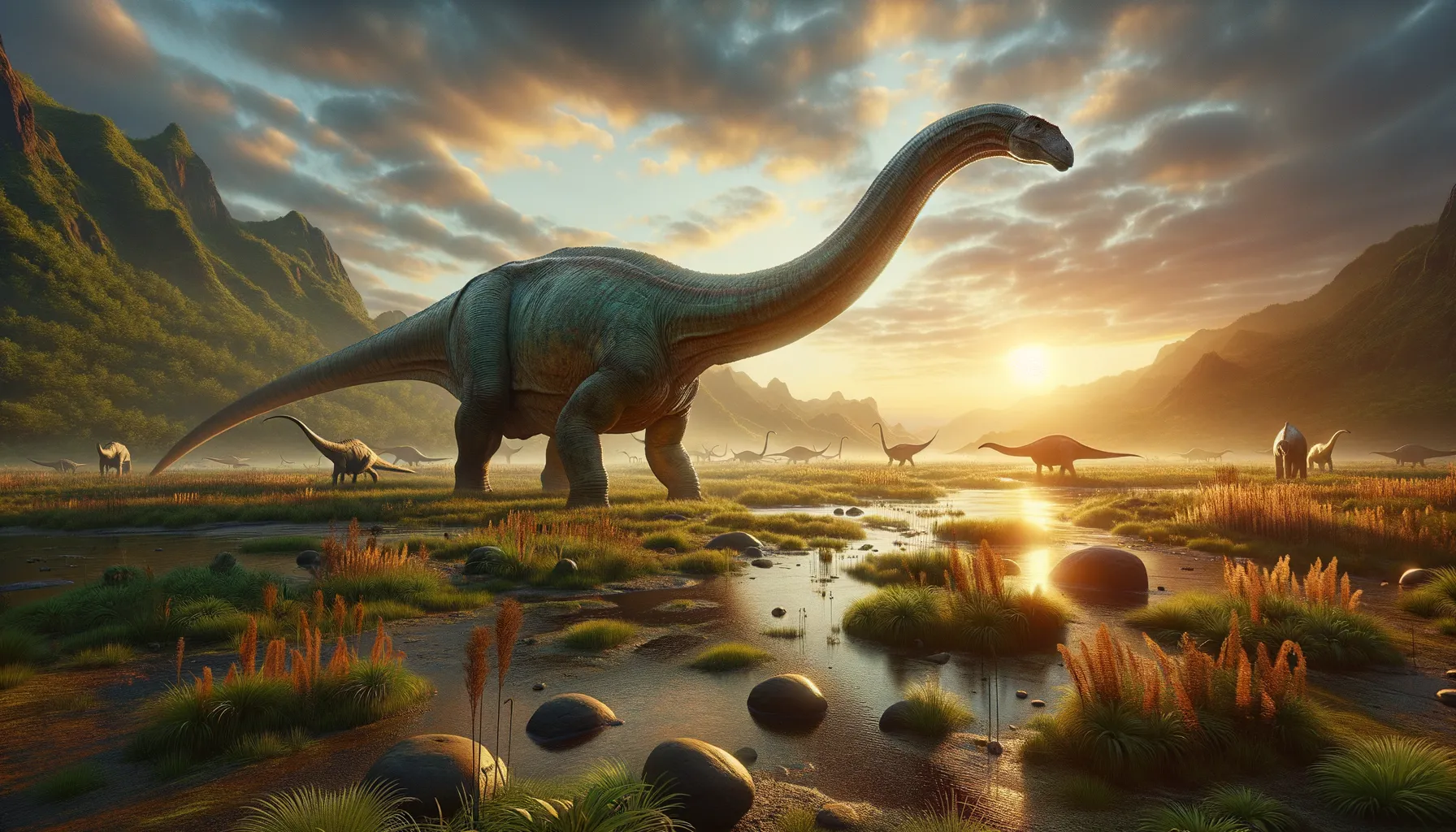
Marmarospondylus
Discovering the giants of the past.
Period
Jurassic
Length
Likely around 15-20 meters.
Height
Exact height unknown.
Weight
Estimated to be several tons.
Marmarospondylus is a lesser-known dinosaur from the Jurassic period, categorized within the sauropod group known for their enormous size and long necks. Though not as famous as some of its relatives, it offers valuable insights into sauropod evolution and diversity. Its remains provide clues about the lifestyle and environment of these gigantic creatures, aiding our understanding of the prehistoric world.
Diet
As a sauropod, it primarily fed on plants. Its long neck allowed it to reach high vegetation and possibly sweep wide areas at ground level.
Hunting
Being a herbivore, Marmarospondylus did not hunt. Rather, it grazed on a variety of plant matter available in its ecosystem.
Environmental challenges
Marmarospondylus faced environmental challenges such as changing climates and possible food shortages. This era involved periodic droughts and shifts in plant availability. Predation risk by large carnivorous dinosaurs also posed a significant threat.
Speed
Unknown but likely slow-moving.
Lifespan
Estimated to be several decades.
First discovery
Discovered in the mid-19th century.
Fun Facts
- Marmarospondylus is known from very limited fossil evidence, which primarily includes a single vertebra found in England.
- The name Marmarospondylus means 'marble vertebra', referring to the texture of the discovered bone.
- This dinosaur lived during the Middle Jurassic period, over 160 million years ago.
- Marmarospondylus was a sauropod, part of a group of long-necked, herbivorous dinosaurs.
- Despite its initial identification, some scientists believe Marmarospondylus might be a dubious name due to the lack of complete fossils.
- The vertebra of Marmarospondylus was originally described by the famous paleontologist Richard Owen in the 19th century.
- Marmarospondylus is often associated with mystery, as its exact classification among dinosaurs remains uncertain.
Growth and Development
Marmarospondylus, like other sauropods, went through rapid growth stages, especially during the juvenile phase. It developed massive size to deter predators and access a wider range of vegetation. The growth pattern likely followed a consistent pattern reaching maturity over several decades.
Habitat
This dinosaur lived in vast floodplains or forested regions with abundant plant life. Such environments provided ample food resources. Seasonal changes may have influenced its migration or foraging habits.
Interaction with other species
Marmarospondylus interacted with other herbivorous dinosaurs, sharing resources. It likely avoided conflict with large predators through sheer size and possibly collective herd behavior.
Natural lifespan
Its natural lifespan was estimated to be around 70-100 years.
Reproduction
Like many dinosaurs, it is believed to have laid eggs, potentially in communal nesting sites. The young likely required some level of care or lived in protective groups until reaching a larger, safer size.
Social behaviour
Marmarospondylus may have exhibited herd behavior, as being in groups would offer protection against predators. Social interaction could involve coordinated foraging and mutual defense.
Fossil locations
Marmarospondylus fossils were first discovered in England, providing the initial evidence of its existence. Limited fossil material means much about its distribution remains speculative. Fossils from similar species suggest it could have roamed widespread areas in Jurassic Europe.
